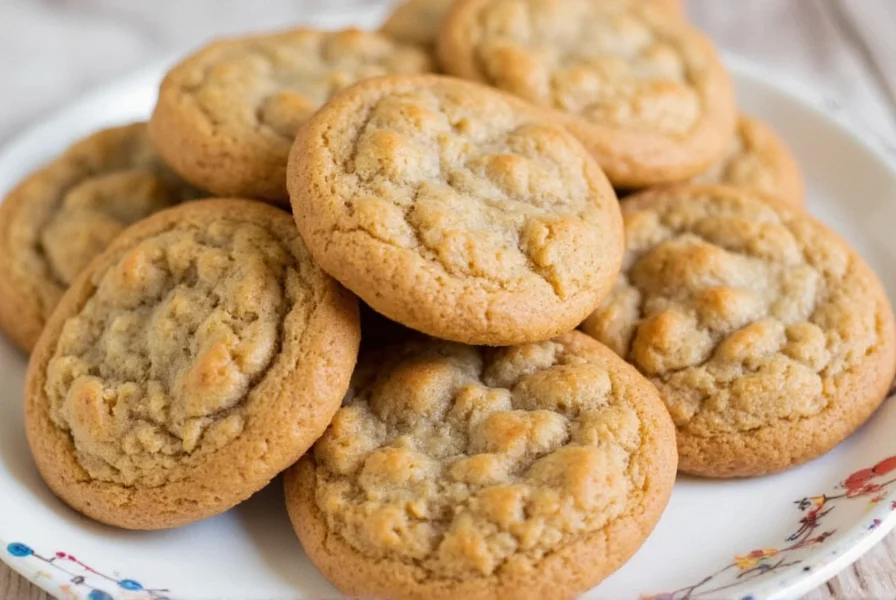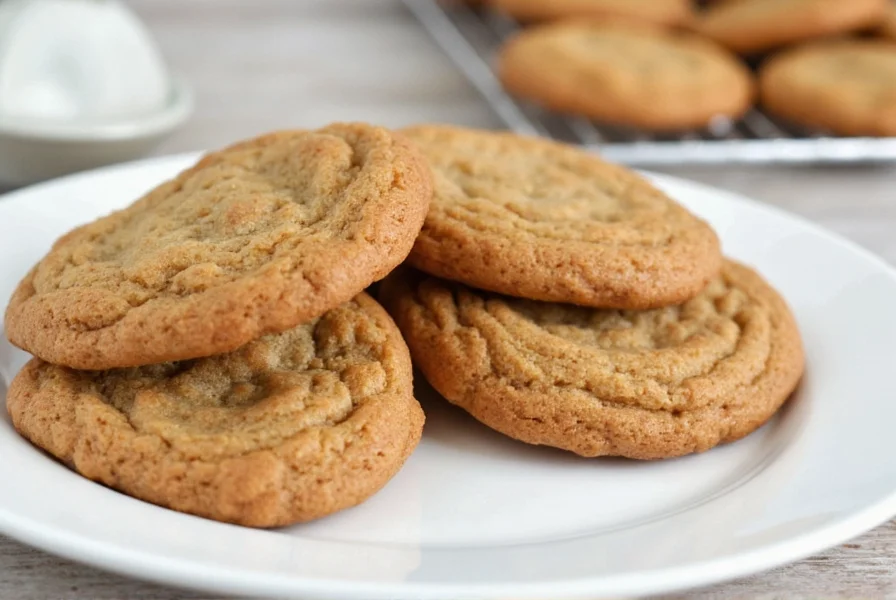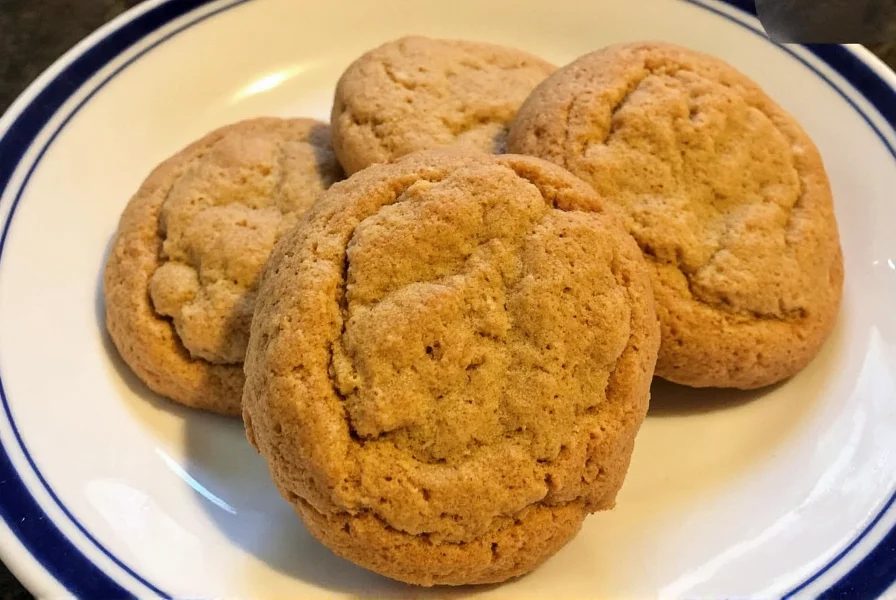There's a reason why professional bakers swear by fresh ginger in their holiday cookies. While ground ginger offers convenience, it simply can't match the vibrant, multi-dimensional flavor profile that fresh ginger brings to your cookie jar. The secret lies in ginger's volatile compounds—zingiberene and gingerol—which are more pronounced in fresh rhizomes and create that distinctive spicy warmth with citrusy undertones.
Why Fresh Ginger Transforms Your Cookies
Understanding the science behind fresh ginger helps explain why it elevates your baking. Fresh ginger contains nearly 400 distinct aromatic compounds, compared to ground ginger which loses many volatile oils during processing. When you grate fresh ginger:
- The cell walls break, releasing gingerol that converts to zingerone during baking
- You preserve essential oils that provide citrusy top notes
- The moisture content enhances cookie texture
- You avoid the dusty, one-dimensional flavor of pre-ground spice
Professional pastry chefs recommend using fresh ginger within 24 hours of grating for maximum flavor impact. The enzymatic reactions that occur after grating gradually mellow the sharpness while developing more complex flavor compounds.
Perfect Fresh Ginger Cookie Recipe
This tested recipe balances the fiery kick of fresh ginger with warm spices for cookies that are soft-centered with delicate crisp edges—a professional baker's signature texture.
| Ingredient | Measurement | Preparation Notes |
|---|---|---|
| Fresh ginger | 1/4 cup finely grated | Peel with spoon, grate on microplane |
| All-purpose flour | 2 1/4 cups | Sifted, measured properly |
| Unsalted butter | 1 cup (2 sticks) | Room temperature |
| Dark brown sugar | 3/4 cup packed | Higher molasses content |
| Molasses | 1/4 cup | Robust, not mild |
Step-by-Step Baking Process
- Prepare ginger: Peel ginger root using a spoon (gentler than a peeler), then finely grate using a microplane. Measure 1/4 cup packed.
- Cream butter and sugars: Beat room temperature butter with brown sugar and granulated sugar until light and fluffy (3-4 minutes).
- Add wet ingredients: Mix in molasses, egg, and vanilla until fully incorporated.
- Combine dry ingredients: Whisk together flour, baking soda, cinnamon, cloves, and salt.
- Incorporate ginger: Stir fresh ginger into wet ingredients before adding dry ingredients.
- Chill dough: Refrigerate for minimum 2 hours (essential for flavor development and preventing overspreading).
- Bake: Scoop 1.5" balls onto parchment-lined sheets. Bake at 350°F (175°C) for 11-13 minutes until edges set but centers remain soft.

Troubleshooting Common Issues
Even experienced bakers encounter challenges with ginger cookies. Here's how to solve the most frequent problems when using fresh ginger:
Problem: Cookies Spread Too Much
Solution: Ensure proper chilling time (minimum 2 hours). Measure flour correctly using the spoon-and-level method. Fresh ginger adds moisture, so you may need an extra tablespoon of flour if your kitchen is humid.
Problem: Weak Ginger Flavor
Solution: Increase fresh ginger to 1/3 cup. Add 1/8 teaspoon black pepper to enhance ginger's pungency. Let dough rest 24 hours in refrigerator for flavor development.
Storage and Serving Recommendations
For optimal freshness, store cookies in an airtight container with a slice of bread (the bread's moisture keeps cookies soft without making them soggy). Properly stored, they maintain peak quality for 5 days at room temperature.
Freeze cookie dough balls for up to 3 months—bake straight from frozen, adding 2-3 minutes to baking time. This fresh ginger cookie recipe freezes exceptionally well because the natural oils in fresh ginger help maintain texture during freezing.

Variations for Different Preferences
Once you've mastered the basic fresh ginger cookie recipe, try these professional variations:
- Candied ginger crunch: Fold 1/4 cup finely chopped candied ginger into dough for sweet-spicy bursts
- Lemon-ginger fusion: Add 1 tablespoon finely grated lemon zest to enhance ginger's citrus notes
- Spiced chai version: Increase cinnamon to 1 1/2 teaspoons and add 1/4 teaspoon cardamom
- Gluten-free adaptation: Substitute with 270g gluten-free flour blend and add 1/2 teaspoon xanthan gum
Fresh Ginger vs Ground Ginger: The Flavor Science
Understanding the chemical differences explains why fresh ginger creates superior cookies. Fresh ginger contains:
- Gingerol: The primary pungent compound (60% more in fresh than dried)
- Zingerone: Forms during baking, providing warm, spicy-sweet notes
- Shogaols: More concentrated in dried ginger, creating sharper heat
When you bake with fresh ginger, the gingerol gradually converts to zingerone through heat, creating that complex, rounded spice profile professional bakers prize. Dried ginger skips this transformation, delivering immediate but one-dimensional heat.
Frequently Asked Questions
Can I substitute ground ginger for fresh in this recipe?
Yes, but with significant flavor differences. Use 2 teaspoons ground ginger for every 1/4 cup fresh grated ginger. However, you'll miss the bright, complex notes from fresh ginger's volatile compounds. For best results, use a combination: 2 teaspoons ground ginger plus 2 tablespoons fresh grated ginger.
Why must I chill ginger cookie dough?
Chilling serves three critical purposes: 1) It solidifies the butter to prevent overspreading, 2) Allows flavors to meld (especially important with fresh ginger's volatile compounds), and 3) Hydrates the flour for better texture. Minimum 2 hours is essential, but 24 hours produces superior flavor development.
How do I properly prepare fresh ginger for baking?
Peel ginger using the edge of a spoon (gentler than a peeler). Grate on a microplane for finest texture that distributes evenly. Measure after grating (1/4 cup packed). For stronger flavor, squeeze grated ginger in paper towel to remove excess moisture before adding to dough.
Why do my ginger cookies taste bitter?
Bitterness typically comes from overbaking or using old spices. Fresh ginger shouldn't taste bitter when properly prepared. Ensure you're not baking beyond 13 minutes, and check your baking soda (should be fresh). If using dark molasses, try reducing to 3 tablespoons and increasing brown sugar by 2 tablespoons.











 浙公网安备
33010002000092号
浙公网安备
33010002000092号 浙B2-20120091-4
浙B2-20120091-4